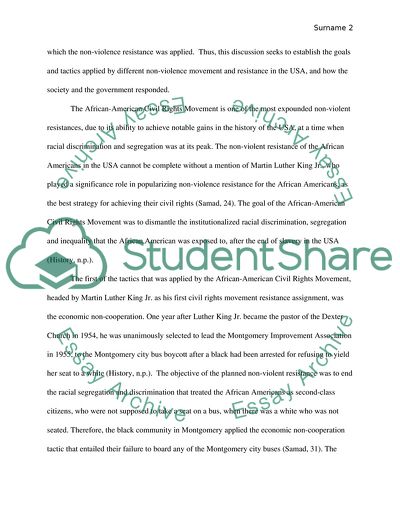Cite this document
(Non-Violence Movement and Resistance in the US Essay Example | Topics and Well Written Essays - 2000 words, n.d.)
Non-Violence Movement and Resistance in the US Essay Example | Topics and Well Written Essays - 2000 words. https://studentshare.org/history/1876736-non-violence-movement-and-resistance-in-the-united-states
Non-Violence Movement and Resistance in the US Essay Example | Topics and Well Written Essays - 2000 words. https://studentshare.org/history/1876736-non-violence-movement-and-resistance-in-the-united-states
(Non-Violence Movement and Resistance in the US Essay Example | Topics and Well Written Essays - 2000 Words)
Non-Violence Movement and Resistance in the US Essay Example | Topics and Well Written Essays - 2000 Words. https://studentshare.org/history/1876736-non-violence-movement-and-resistance-in-the-united-states.
Non-Violence Movement and Resistance in the US Essay Example | Topics and Well Written Essays - 2000 Words. https://studentshare.org/history/1876736-non-violence-movement-and-resistance-in-the-united-states.
“Non-Violence Movement and Resistance in the US Essay Example | Topics and Well Written Essays - 2000 Words”. https://studentshare.org/history/1876736-non-violence-movement-and-resistance-in-the-united-states.


